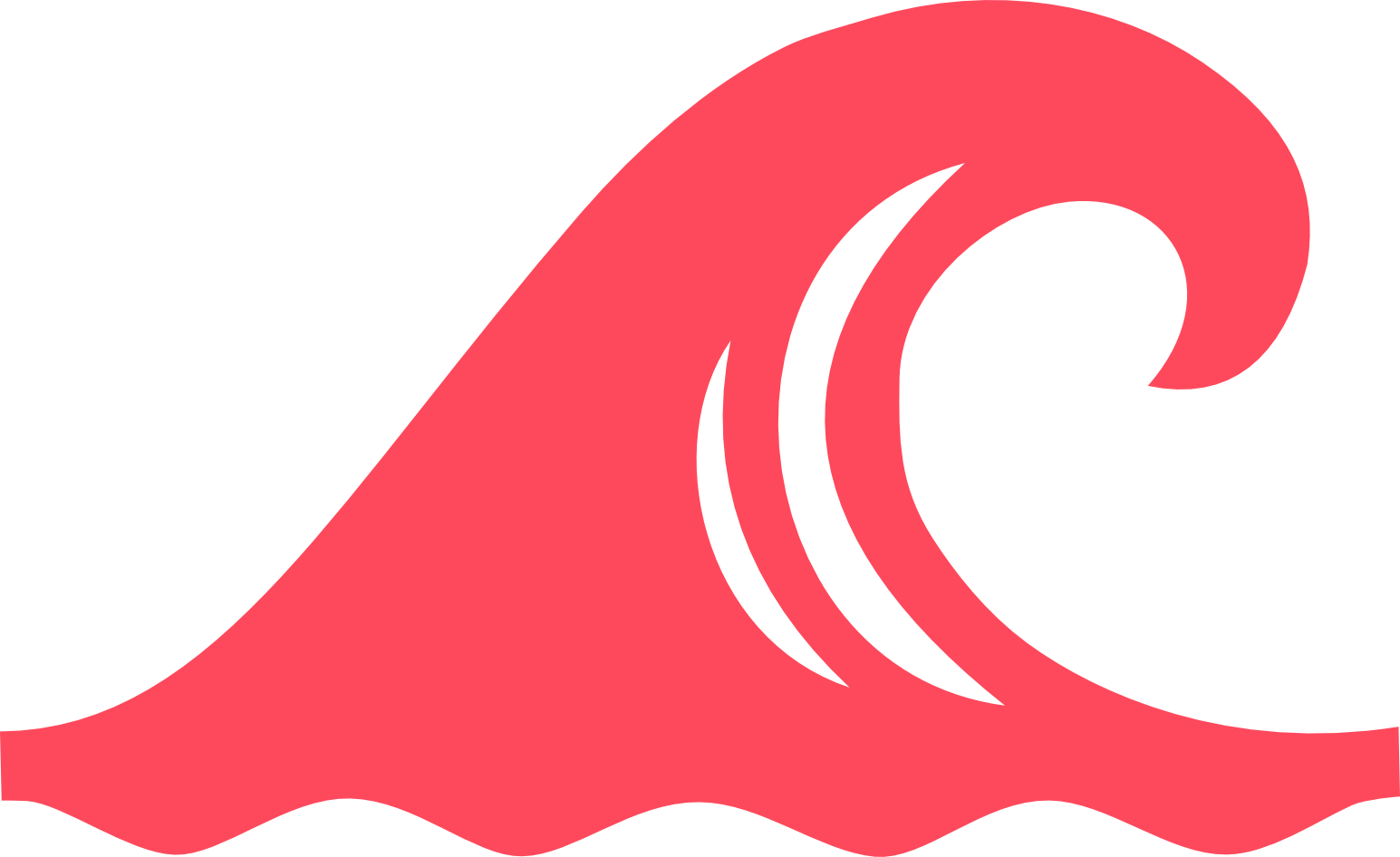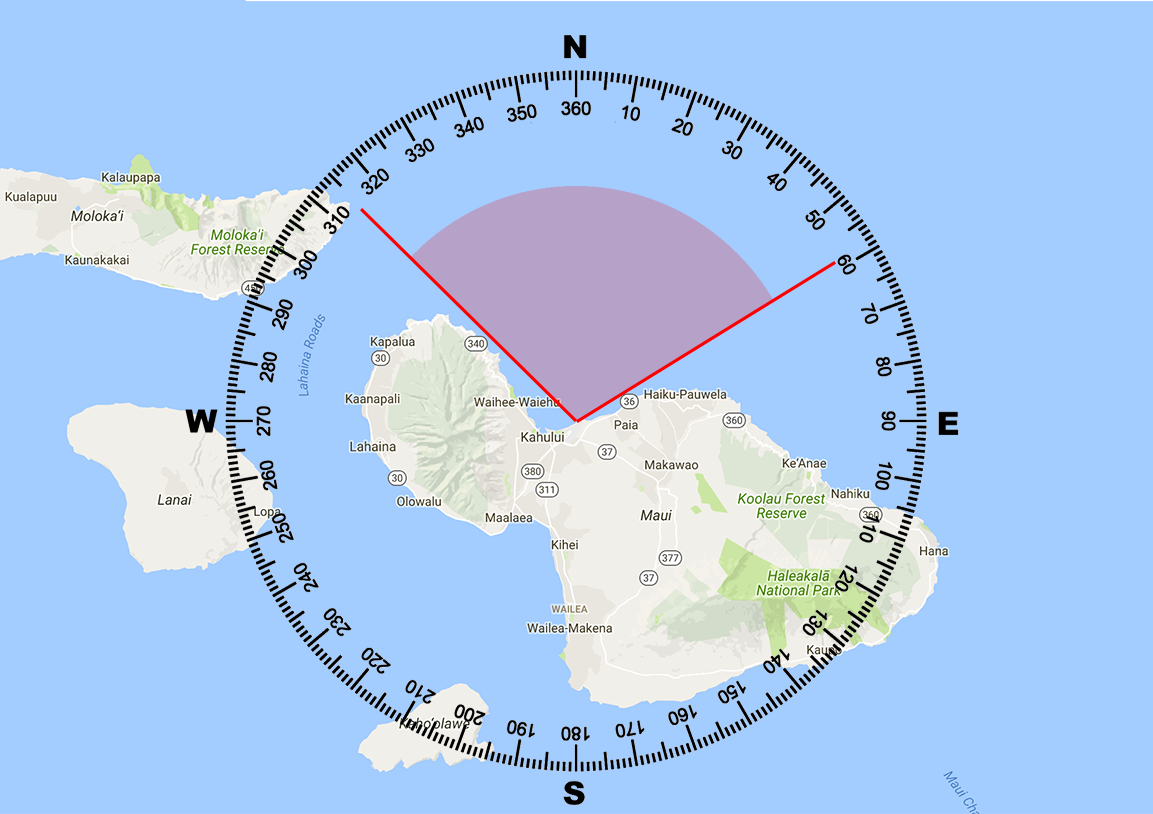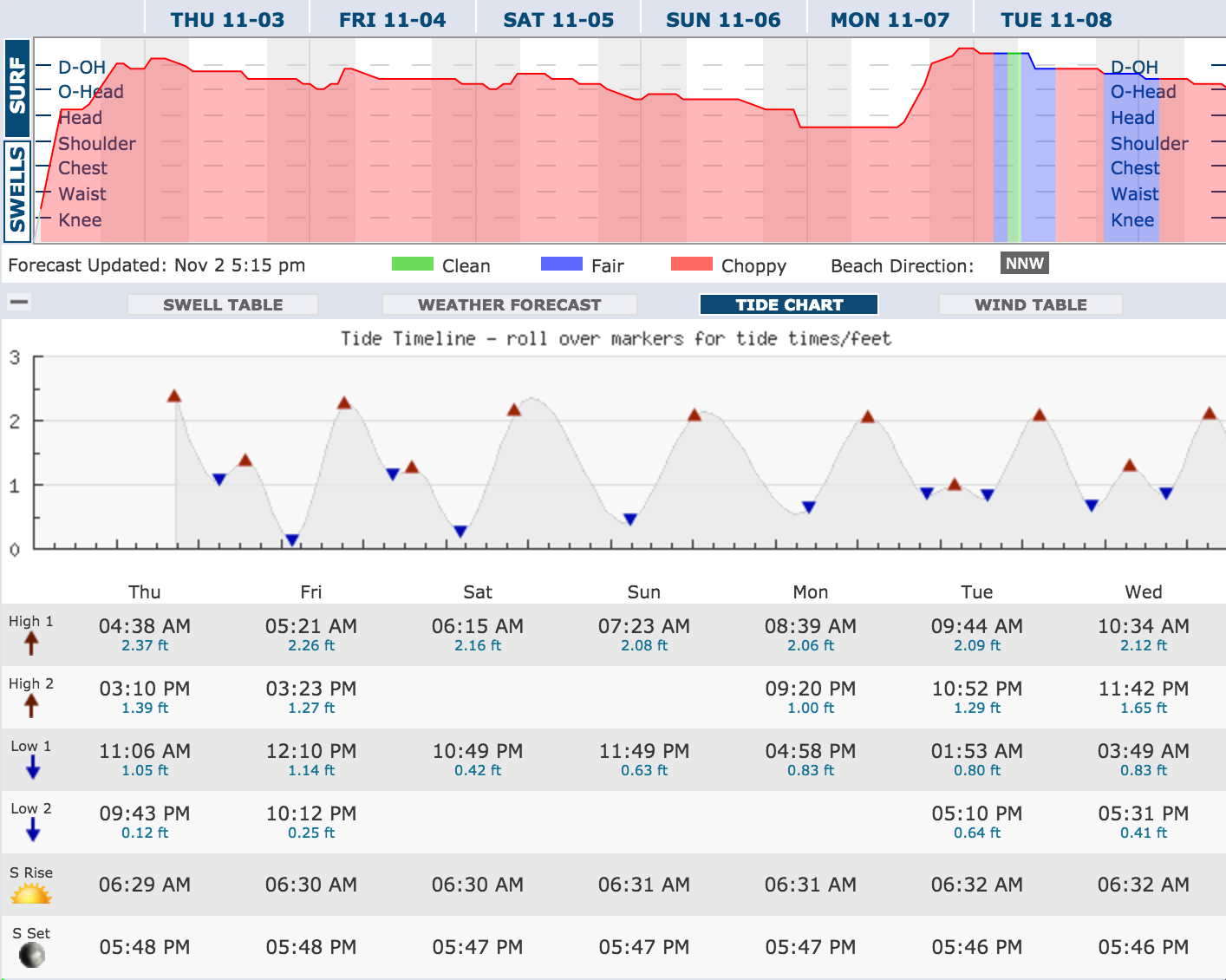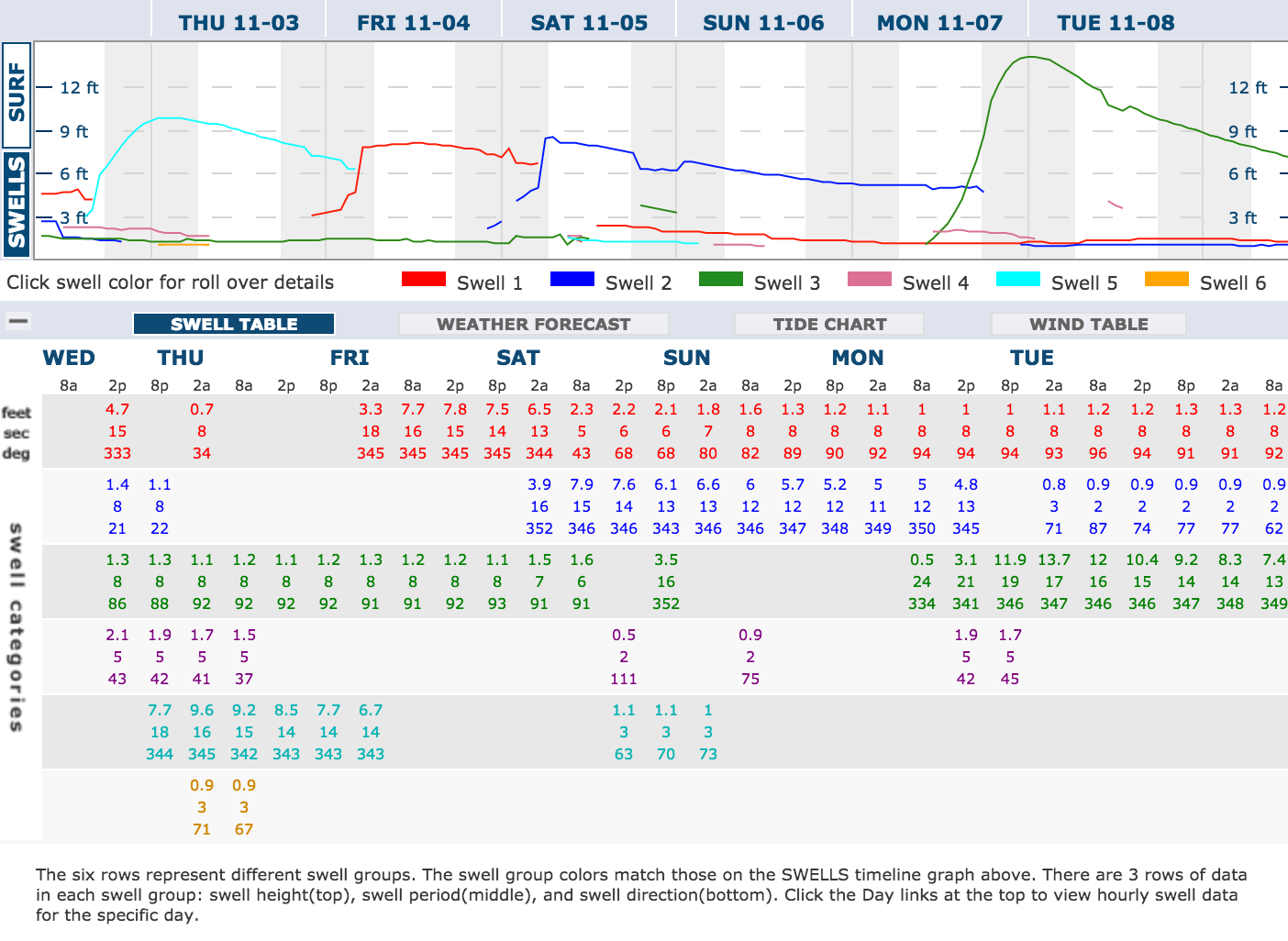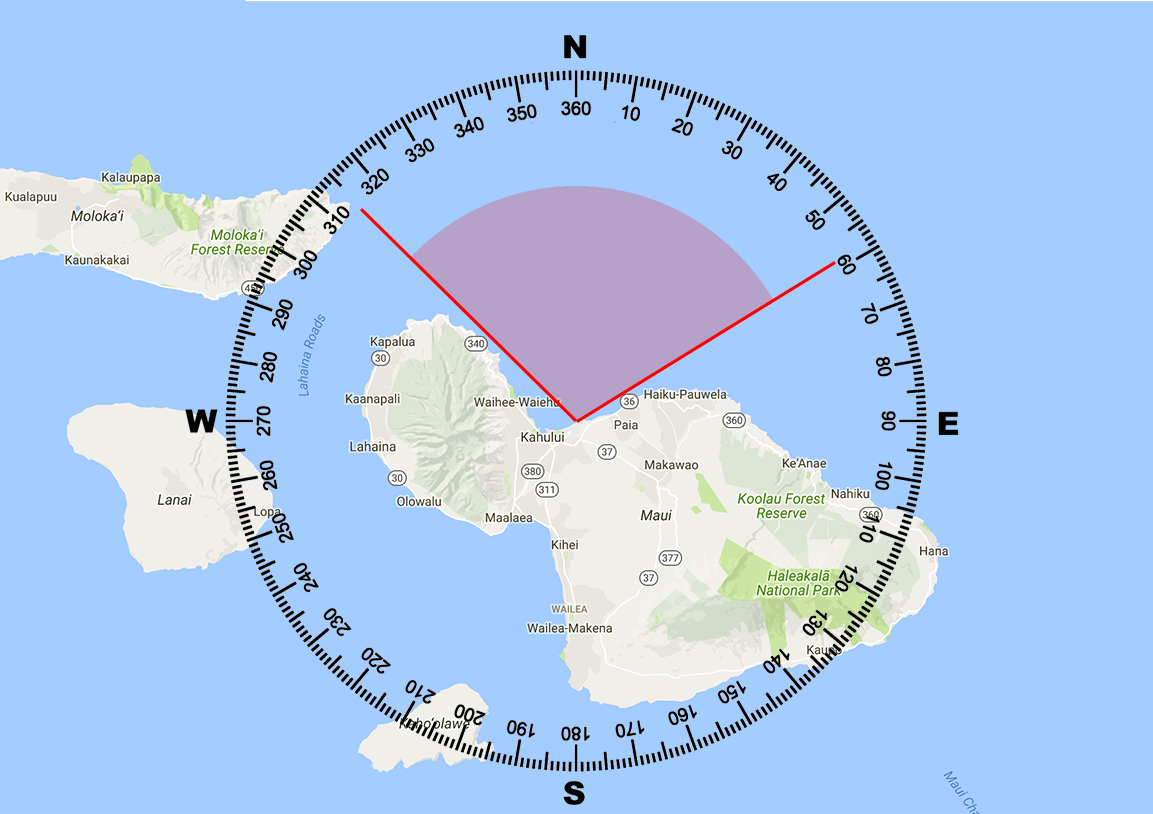Swell Direction!
The waves on Maui’s North Shore are caused by swell ranging from North West to North East. As illustrated on the map, swell heading from any direction within the red sector will hit Maui’s North Shore significantly.
To easy see directions on google maps, check Google Compass, it’s a real cool online compass helper.
Swellinfo provides all the information needed related to upcoming swells. The charts provide an estimated summary of the different swells in the area as well as details, such as direction, wave period in seconds (the more the better) and wave height. Even though valid for Hookipa, it should not be too far off for Kanaha.
Anything above 12 seconds (really good is 18+ seconds) and more than 5 feet will be nice and big. More than 8 feet starts to be scary….
Current Conditions
You will find current wave conditions from the Pacific buoys at the National Data Buoy Center website. Buoy Station 51205 – Pauwela, Maui, HI (187) is the closest one to Maui’s North. Or simply check the Kanaha webcam.
Wave Forecast
The example here is taken from the current week of November 2nd, 2016, showing the wave sized to be expected.
The tide chart below provides high/low tide times. The waves are best just after low tide, when it is rising.
Swell Details
Swell details provide actual size, wave period and direction of the individual swells. Most times, there are multiple swells, which may superposition (summarizes) accidentally, making particular sets/waves bigger, or just a little weird.
Reef Orientation
To make it totally confusing, the reef orientation defines how the waves are breaking – or pealing – from left to right, right to left or just closing out.
The Kanaha reef’s orientation is facing 325°/NNW, meaning if the waves are coming from that direction, chances are for closing out mushy waves.
Wind and Weather Conditions
For wind forecast, wind guru is one of the best places to check, you will also find weather and wave information on it. Check WindyTV for a more global and long term situation, the interactive viewer (current and forecast) for weather, swell and temperature is amazing . Since the weather, in particular rain, has impact on the local wind conditions, it is always good to check the rain radar at KITV.
